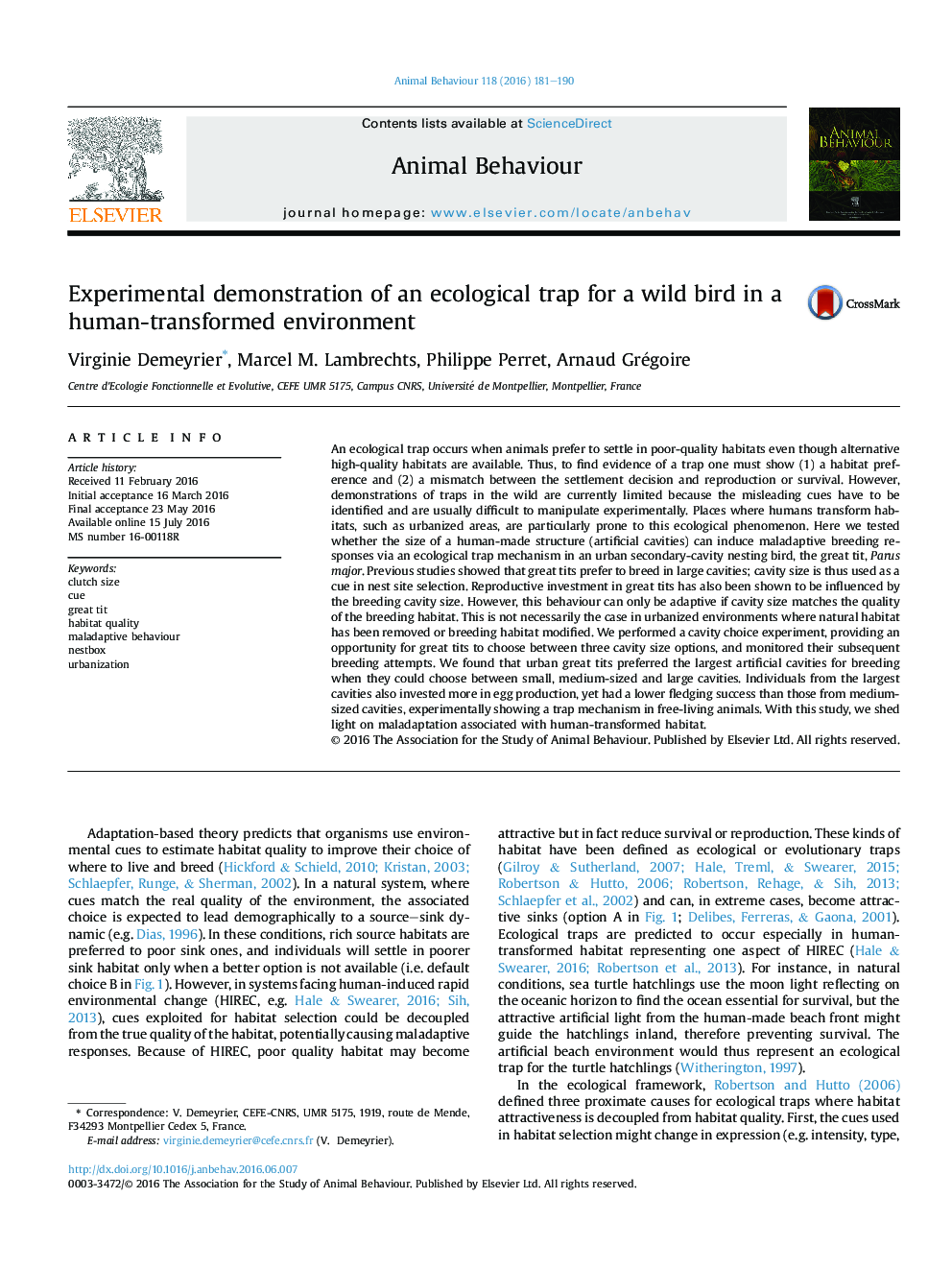| کد مقاله | کد نشریه | سال انتشار | مقاله انگلیسی | نسخه تمام متن |
|---|---|---|---|---|
| 2416248 | 1552210 | 2016 | 10 صفحه PDF | دانلود رایگان |
• We tested whether nest cavity size is a potential ecological trap in an urban area.
• Great tits preferred breeding in larger cavities.
• Females from larger cavities had larger clutches.
• Females from larger cavities had lower fledging success.
An ecological trap occurs when animals prefer to settle in poor-quality habitats even though alternative high-quality habitats are available. Thus, to find evidence of a trap one must show (1) a habitat preference and (2) a mismatch between the settlement decision and reproduction or survival. However, demonstrations of traps in the wild are currently limited because the misleading cues have to be identified and are usually difficult to manipulate experimentally. Places where humans transform habitats, such as urbanized areas, are particularly prone to this ecological phenomenon. Here we tested whether the size of a human-made structure (artificial cavities) can induce maladaptive breeding responses via an ecological trap mechanism in an urban secondary-cavity nesting bird, the great tit, Parus major. Previous studies showed that great tits prefer to breed in large cavities; cavity size is thus used as a cue in nest site selection. Reproductive investment in great tits has also been shown to be influenced by the breeding cavity size. However, this behaviour can only be adaptive if cavity size matches the quality of the breeding habitat. This is not necessarily the case in urbanized environments where natural habitat has been removed or breeding habitat modified. We performed a cavity choice experiment, providing an opportunity for great tits to choose between three cavity size options, and monitored their subsequent breeding attempts. We found that urban great tits preferred the largest artificial cavities for breeding when they could choose between small, medium-sized and large cavities. Individuals from the largest cavities also invested more in egg production, yet had a lower fledging success than those from medium-sized cavities, experimentally showing a trap mechanism in free-living animals. With this study, we shed light on maladaptation associated with human-transformed habitat.
Journal: Animal Behaviour - Volume 118, August 2016, Pages 181–190
